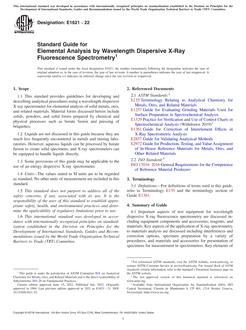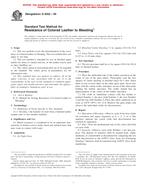1.1 This test method covers the back-reflection Laue procedure for determining the orientation of a metal crystal. The back-reflection Laue method for determining crystal orientation (1, 2) may be applied to macrograins (3) (0.5-mm diameter or larger) within polycrystalline aggregates, as well as to single crystals of any size. The method is described with reference to cubic crystals; it can be applied equally well to hexagonal, tetragonal, or orthorhombic crystals.
1.2 Most natural crystals have well developed external faces, and the orientation of such crystals can usually be determined from inspection. The orientation of a crystal having poorly developed faces, or no faces at all (for example, a metal crystal prepared in the laboratory) must be determined by more elaborate methods. The most convenient and accurate of these involves the use of X-ray diffraction. The “orientation of a metal crystal” is known when the positions in space of the crystallographic axes of the unit cell have been located with reference to the surface geometry of the crystal specimen. This relation between unit cell position and surface geometry is most conveniently expressed by stereographic or gnomonic projection.
1.3 The values stated in inch-pound units are to be regarded as the standard.
1.4 This standard does not purport to address the safety problems associated with its use. It is the responsibility of the user of this standard to establish appropriate safety and health practices and determine the applicability of regulatory limitations prior to use.
Product Details
- Published:
- 01/01/1996
- Number of Pages:
- 12
- File Size:
- 1 file , 250 KB


